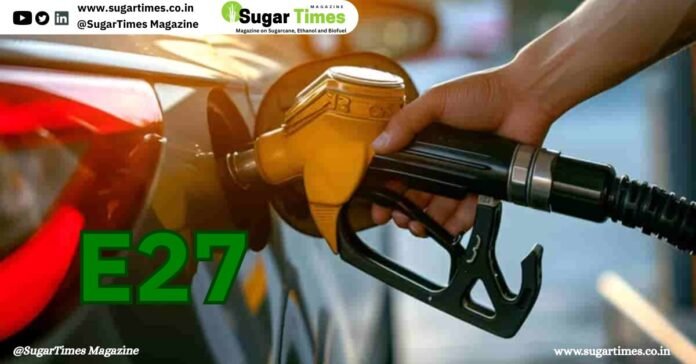New Delhi, October 14, 2025 — The Indian sugar industry has urged the government to raise the ethanol blending target with petrol from the current 20% (E20) to 27% (E27). The move aims to make better use of the country’s growing ethanol production capacity and support millions of sugarcane farmers.
According to Deepak Ballani, Director General of the Indian Sugar and Bioenergy Manufacturers Association (ISMA), the sector has invested over ₹40,000 crore and built a capacity of more than 9,000 million litres of ethanol annually from sugarcane alone. “We are ready to support blending beyond E20 — up to E27 and even higher,” Ballani said, adding that a clear and time-bound national roadmap for ethanol mobility is essential for long-term growth and stability in the sector.
For the ethanol supply year 2025-26, the industry has collectively offered 17,760 million litres of ethanol to oil marketing companies (OMCs) — significantly higher than their annual requirement of 10,500 million litres. Of this, about 4,710 million litres are from sugarcane-based units, while 13,040 million litres are from grain-based producers using rice and maize.
Ballani warned that without a defined roadmap beyond E20, many plants could face underutilization, leading to idle investments, lower revenues, and a slowdown in innovation. His remarks follow similar demands from grain-based ethanol manufacturers, who also urged the government to increase blending levels and temporarily pause new investments to stabilize the market.
Currently, India has around 400 ethanol manufacturers, with 250 units producing ethanol from grains and the rest from sugarcane. Together, they have built a total capacity of 17,000 million litres, though OMCs purchase only 11,000–12,000 million litres each year.
Industry associations like ISMA and the Indian Federation of Green Energy (IFGE) have also appealed for GST rationalization on flex-fuel and hybrid vehicles, suggesting that consumer incentives similar to the FAME scheme for electric vehicles could accelerate India’s ethanol transition.
They further recommended a phased and structured roadmap defining blending milestones, vehicle compatibility standards, and pathways for diversifying into advanced biofuels — such as 2G/3G ethanol, sustainable aviation fuel, and green chemicals.
India’s ethanol blending programme has seen major progress since the government advanced the 20% blending target from 2030 to 2025-26 under the National Biofuel Policy (2018). Between 2014-15 and July 2025, it has generated payments of over ₹1.25 lakh crore to farmers and saved more than ₹1.44 lakh crore in foreign exchange by reducing crude oil imports.
The push toward E27 blending, industry experts say, could mark the next big step in India’s journey toward energy independence and sustainable biofuel production.





